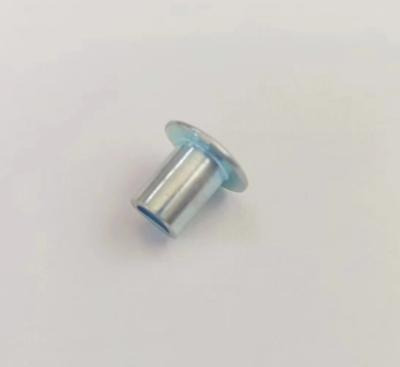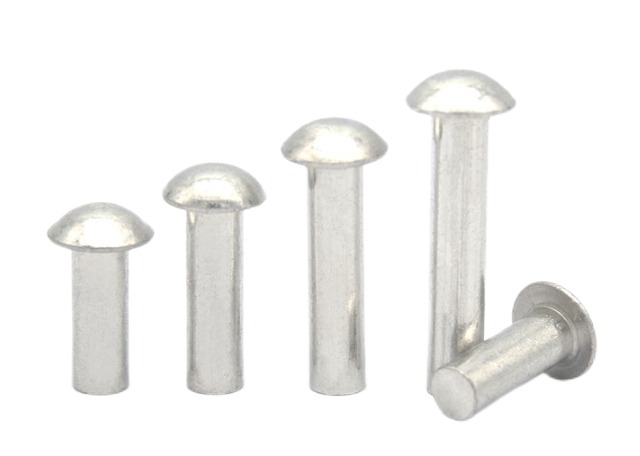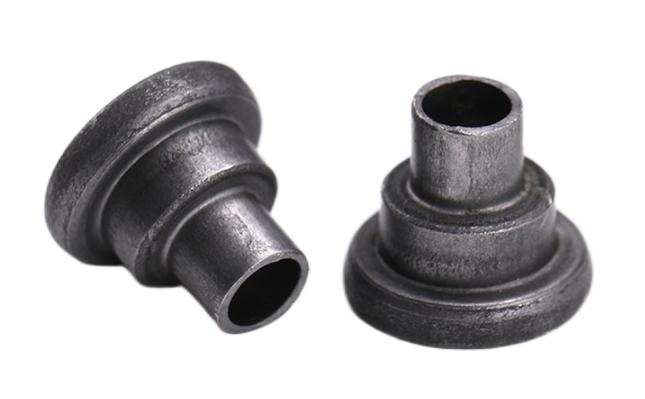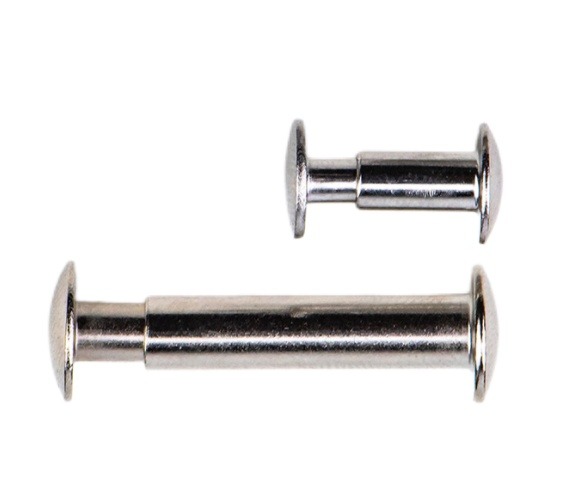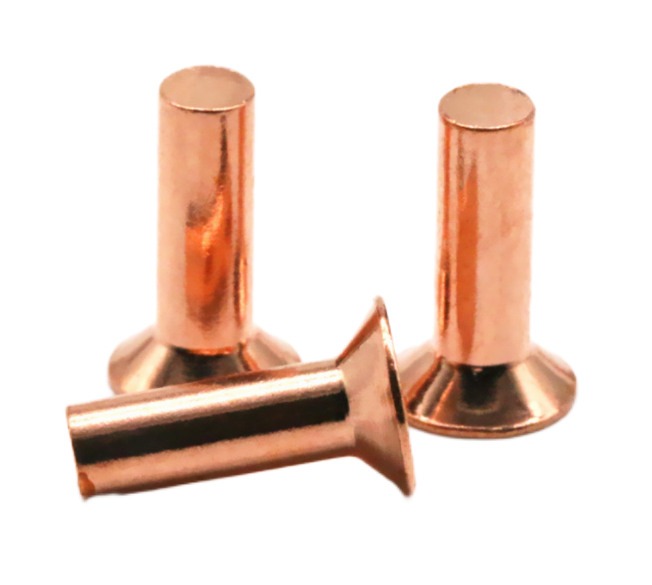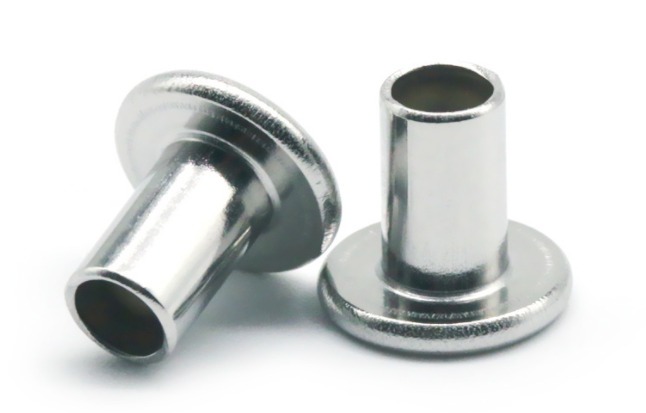What are Different Types of Rivets and How to Choose the Right One?
Rivets are versatile mechanical fasteners that are used to securely join materials together. They are available in a variety of types, each tailored to specific needs and applications. In this article, we will focus on the topic of different types of rivets, exploring the diverse world of rivets, examining commonly used types, their characteristics, the industries in which they are used, and the steps to choose the right type for your specific application.

Different Types of Rivets
1. Solid Rivets
Solid rivets are one of the most basic and oldest types.
They are made up of a cylindrical solid shaft with a head on one end and a tail on the other.
Installation entails heating the tail end until it becomes malleable and then striking or pressing it to form a second head.
They are suitable for heavy-duty applications such as aerospace and heavy machinery due to their exceptional strength and reliability.
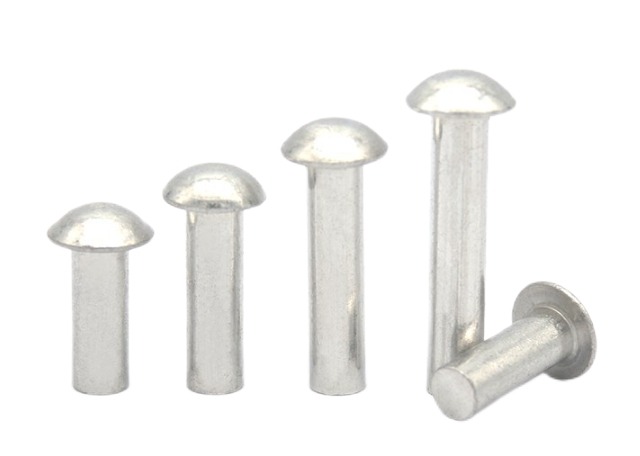
2. Blind Rivets (Pop Rivets)
Blind rivets, also known as pop rivets, are intended for use in applications where only one side of the joint is accessible.
They consist of a tubular body and a mandrel (stem) that extends through the body.
Using a specialized tool, the mandrel is pulled, expanding the body and creating a secure connection.
Widely used in construction, automotive, and manufacturing.
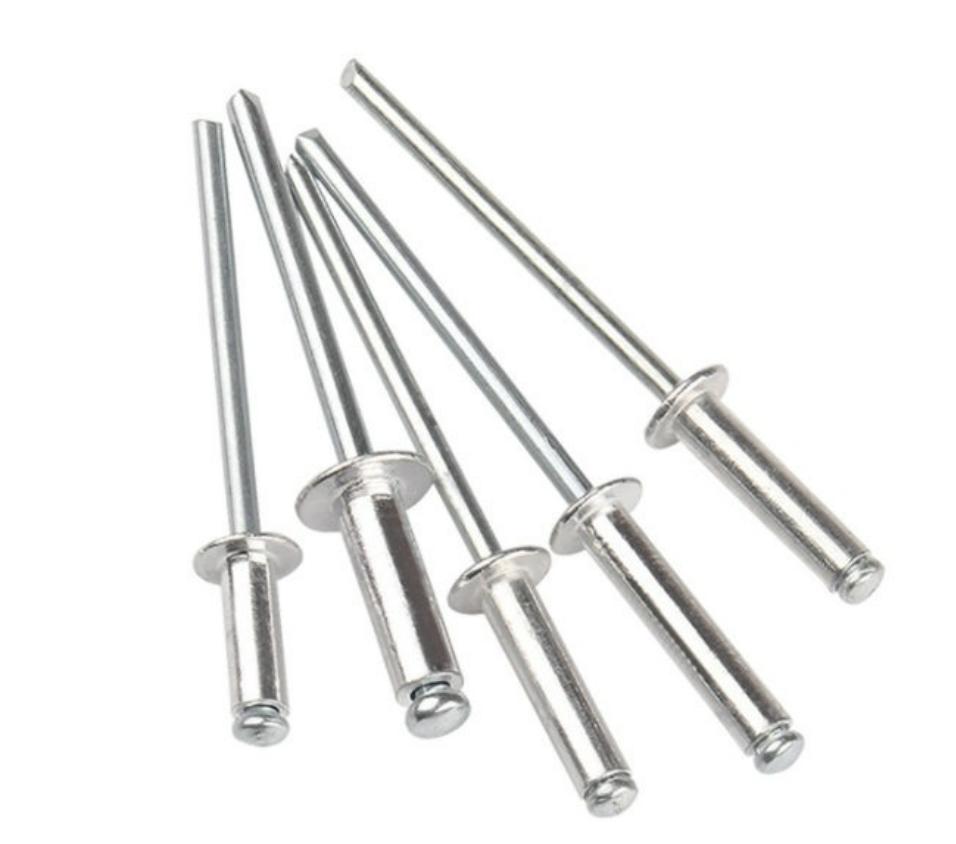
3. Tubular Rivets
Tubular rivets are similar to solid rivets in appearance, but they have a hole in the center.
Ideal for applications where a lighter, less bulky fastening solution is required.
Used extensively in leatherwork, textile manufacturing, and the manufacture of handbags and luggage.
4. Split Rivets (Bifurcated Rivets)
Split rivets, also known as bifurcated rivets, have two tines that separate when the rivet is inserted through a hole.
After the tines have been spread, they can be bent over to form a secure connection.
Frequently used in document assembly, such as binding books and securing tags and labels.
5. Drive Rivets
Drive rivets are made up of three parts: a head, a hollow body, and a split tail.
The split tail is installed by driving it into the body, causing it to expand and form a connection.
Commonly used in the automotive industry and for fastening plastic parts.
6. Countersunk Rivets
Countersunk rivets have a flat head that fits flush with the surface of the materials being joined.
They are often used for aesthetic reasons or to prevent any protrusions.
Find applications in aviation, boat building, and woodworking.
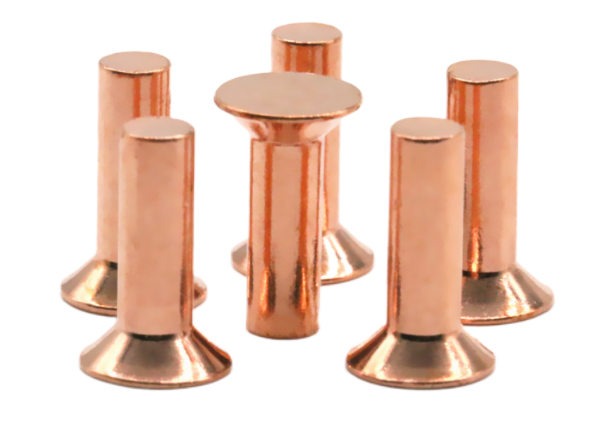
7. Semi-Tubular Rivets
Semi-tubular rivets are similar to solid rivets, but the tail end has a partial hole.
Because of this design, the rivet can be easily clinched or rolled to form a second head, resulting in a secure connection.
Electronics, furniture assembly, and machinery manufacturing are examples of common applications.
8. Multi-Grip Rivets
Multi-grip rivets have multiple grip ranges, allowing them to be used in materials of varying thicknesses.
Used extensively in the aerospace and automotive industries to securely join components of varying thicknesses.
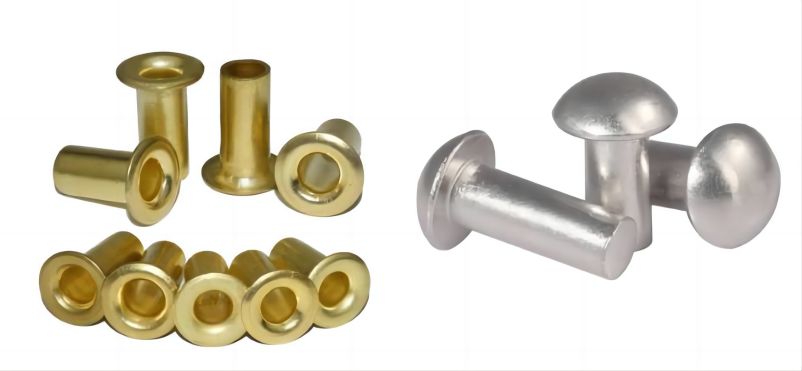
Steps to Choose the Right Types of Rivets
Selecting the right type of rivet is crucial to ensure a secure and durable fastening solution for your specific application.
- Identify the Material to Be Joined
Consider the materials you’ll need to connect. Metal, plastic, wood, and fabric are all common materials. The type of material will influence the rivet selection.
- Determine the Required Strength
Determine the joint’s load-bearing requirements. Some applications require a stronger connection, while others may need a more lightweight solution. Different types of rivets offer varying levels of strength.
- Accessibility of the Joint
Determine whether the joint is accessible from both sides or whether it is a blind joint (accessible only from one side). Blind rivets (pop rivets) are appropriate for blind joints, whereas solid or semi-tubular rivets are appropriate for accessible joints.
- Consider Environmental Factors
Think about the environmental conditions the rivet will be exposed to, such as moisture, heat, or corrosive substances. Some rivets offer better resistance to environmental factors than others.
- Appearance and Finish
If aesthetics are a concern, consider the appearance and finish of the rivet. For applications where the rivet head should be flush with the material surface, countersunk or flat head rivets are appropriate.
- Grip Range
Measure the thickness of the materials you are joining. The grip range of the rivet (the range of material thickness it can accommodate) should match or exceed the thickness of your materials.
- Type of Application
Different types of rivets are better suited to different applications. Pop rivets, for example, are commonly used in construction, whereas split rivets are ideal for binding documents.
- Tools and Equipment
Consider the tools and equipment available for rivet installation. Some rivet types may require specialized tools, so ensure you have access to the necessary equipment.
- Regulatory Requirements
Fasteners are subject to industry-specific standards and regulations. Check to see if your rivet choice complies with any industry-specific requirements, especially in fields such as aerospace and automotive.
- Consult with a Rivet Expert
If you’re not sure which type of rivet is best for your application, talk to a rivet expert or supplier. They can provide guidance based on your specific needs and requirements.
- Testing and Prototyping
Before committing to a large-scale project, it’s a good idea to test the chosen rivet type on a prototype or sample materials to ensure it meets your strength and performance expectations.
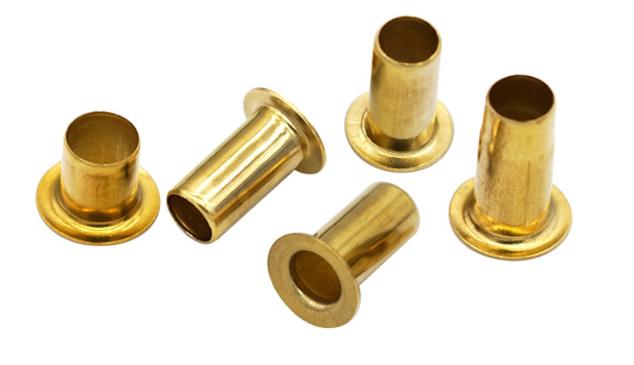
Summary
Rivets are essential fasteners that come in a variety of types to meet the needs of various industries and applications. Rivets are a popular choice for joining materials due to their versatility, dependability, and ease of use. There is likely a specific type of rivet designed to provide a strong, permanent connection whether you are working with metal, plastic, or fabric. Understanding the differences among these types of rivets is critical for selecting the right fastener for your project or application and ensuring a secure and long-lasting bond.

